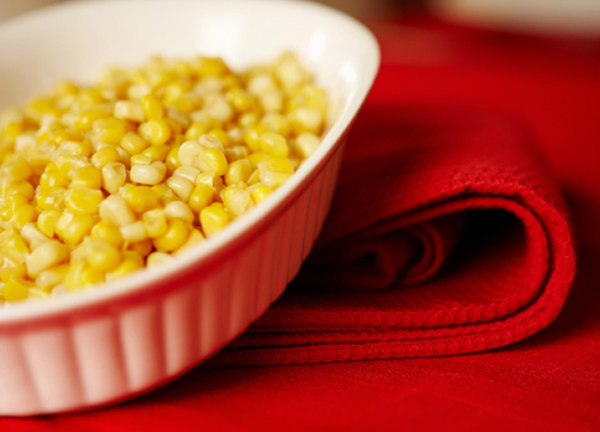Physical Activity – How much do you really need?
As I previously mentioned, The Health and Human Services Department sets physical activity guidelines after reviewing a good decades worth of research related to physical activity and health.
This report encompasses everyone from the age of 6 and up. Let’s go into a little more detail on the adult guidelines.
Adult Physical Activity Guidelines
- All adults should avoid inactivity. Any type of activity is better than nothing. Adults who include activity as part of their everyday life gain some form of health benefit.
- To see substantial health benefits, include at least 150 minutes (2 ½ hours) per week of moderate-intensity activity. If times a factor, you can see the same benefits by bumping up the intensity and being vigorously active 75 minutes (1 hr. 15 min.) each week.Yes, it is still okay to break your activity into chunks.For example, if your schedule doesn’t allow 30 minutes at the gym, you can include a 10 minute brisk walk during lunch break to count towards the goal of 150 minutes for the week. However, workout segments less than 10 minutes in length are not as beneficial.
Also, the most benefit is seen by spreading your activity throughout the week. If you’re tempted to hit the gym for a power workout session on a Saturday for 2 ½ hours, that is not as beneficial as 30 minutes of activity 5 days out of the week. But, remember, any form/amount of activity is better than nothing!
- If you want to take things to the next levels, more extensive health benefits are seen when activity is increased to 300 minutes (5 hours) per week of moderate intensity activity or 150 minutes of vigorous intensity aerobic activity.
- Don’t forget strength training! You want to include all major muscle groups on two or more days each week. Especially beneficial as we age and see a decline in metabolism (and corresponding weight gain) if muscle mass is not maintained.
Now, don’t let yourself be overwhelmed and give up without even attempting to meet these guidelines. Activity does not have to be hard or expensive. You can walk your dog, go dancing, climb the stairs at work, mow the lawn, and go to the gym. There are many, many options available to get 2 ½ hours of physical activity every week.
All the best,
Lisa Nelson RD
Heart Health and Weight Loss – Do you need to eat fat to lose belly fat?
I enjoy the show The Biggest Loser. On one of the episodes this season they had an individual from Prevention magazine share some tips based on the “Flat Belly” diet. I was very excited because it sounded like a link had been found between the Mediterranean diet and reduced abdominal obesity. Hence, the reason for this article!
The Mediterranean diet contains an increased level of monounsaturated fat compared to the typical American diet. Monounsaturated fat is a type of heart healthy unsaturated fat. One of the best monounsaturated fat sources is olive oil. I went to work researching to find scientific evidence to support a link between a diet high in monounsaturated fat and reduced belly fat.
Here’s the main study supporting the connection between decreased abdominal obesity and monounsaturated fats.
Study: Published in the Diabetes Care back in 2007 by J.A. Paniagua, MD, PHD, A. Gallego de la Sacristana, MD, I. Romero, PHD, A. Vidal-Puig, MD, PHD, J.M. Latre, MD, PHD, E. Sanchez, MD, P. Perez-Martinez, MD, PHD, J. Lopez-Miranda, MD, PHD and F. Perez-Jimenez, MD, PHD
Monounsaturated Fat-Rich Diet Prevents Central Body Fat Distribution and Decreases Postprandial Adiponectin Expression Induced by a Carbohydrate-Rich Diet in Insulin-Resistant Subjects
The purpose of this study was to show that central obesity is linked with insulin resistance (when the body does not respond normally to insulin) and studied the effect of three different diets with the same level of calories on fat distribution, insulin sensitivity, and peripheral adiponectin (fat hormone) gene expression. The study included 11 individuals that were considered insulin resistant. Everyone in the study spent 28 days on each of the following diets: 1. diet enriched in saturated fat, 2. diet rich in monounsaturated fat, 3. diet rich in carbohydrates.
The study found weight, body composition, and metabolism unchanged during all three diets. On a high carbohydrate diet, fat tended to be redistributed to the abdominal area versus the high fat diets.
There have been many studies conducted on this theory, but the results are all conflicting.
Expert Opinion
1. Not enough evidence to support a connection.
This was a fairly small study of only eleven individuals. A study on 62 women published in the Journal of Nutrition in 2004 did not find a link between a diet high in monounsaturated fat and changed body fat distribution. There needs to be more large scale studies that conclusively establish a link before we can jump on the bandwagon.
2. Follow a Mediterranean Diet anyway!
Whether or not a Mediterranean Diet targets belly fat or not, the benefits of this type of diet are well known when it comes to heart health and weight loss.
Those that follow a Mediterranean Diet have a reduced risk of developing heart disease and dying from a heart attack. Even those that have survived a heart attack and lived to adopt the Mediterranean Diet significantly reduce their risk of a second heart attack and other complications.
Also, those that follow the Mediterranean diet have increased satiety (feelings of fullness) due to the adequate fat and fiber content. This means a decreased urge to overeat which promotes weight loss.
Characteristics common to a Mediterranean Diet include:
Consume high intake of fruits and vegetables
Select whole grains
Consume healthy fats (canola and olive oil)
Eat nuts in moderation
Low red wine consumption
Limit eggs to less than 4 times per week
Consume little red meat
Eat fish regularly
If you adopt this style of eating now and some conclusive evidence comes out in the future supporting a link with decreased belly fat, it won’t matter. You’ll already be lean with a healthy heart!
Receive heart health and weight loss tips from dietitian Lisa Nelson when you subscribe to The Heart of Health ezine at https://www.lisanelsonrd.com/hearthealth.html. You can select from the free e-courses How to Lower Cholesterol in 8 Simple Steps or 7 Natural Ways to Lower Blood Pressure when you subscribe.
Lower Cholesterol – Is grapefruit juice safe with medications, such as Lipitor?
 Here’s another question I asked Dr. Cynthia Shelby-Lane and her answer.
Here’s another question I asked Dr. Cynthia Shelby-Lane and her answer.
Lisa Nelson RD: Is it safe for individuals taking medication for heart disease, such as Lipitor, to eat grapefruit or drink grapefruit juice?
Dr. Shelby-Lane: I am including information that may help answer your question about grapefruit and a variety of nutritionals that affect statin drugs for the lowering of cholesterol.
Zocor (Simvastatin), for example, is a Statin drug, used to lower high cholesterol levels, and also known as HMG-CoA reductase inhibitor. Zocor may affect the absorption or utilization of vitamins E and coenzyme Q10. Tests showed the average concentration of coenzyme Q10 in blood plasma decreased by approximately 50% after statins were used for 30 days. Supplementation is considered beneficial.
Grapefruit and grapefruit juice may increase the effects of HMG-CoA reductase inhibitors and should not be consumed at the same time. It is suggested that these medications be taken with water. Grapefruit contains substances that may inhibit the body’s ability to break down statin drugs increasing the toxicity of the drug. Muscle pain, tenderness, or muscle weakness may be a result. If you begin to notice these symptoms, contact your doctor.
Niacin is the form of vitamin B3 used to lower cholesterol. Large amounts of niacin taken with a statin drug may cause serious muscle disorders (myopathy). Reasonable levels of niacin combined with statin drugs have been shown to enhance the cholesterol lowering effect. For proper dosage, consult your physician before taking niacin.
Pomegranate juice has been shown to inhibit the same enzyme inhibited by grapefruit juice. This may cause reactions similar to grapefruit juice when it is used with statin drug treatments.
A study of 37 people with high cholesterol treated with diet and statin drugs found vitamin A increased in the blood over two years of therapy. People taking statin drugs and vitamin A supplements should have blood levels of vitamin A monitored.
Magnesium and aluminum containing antacids were reported to interfere with statin drug absorption. To avoid this interaction, take statin drugs two hours before or after any aluminum/magnesium containing antacids. Some magnesium supplements such as magnesium hydroxide are also antacids.
It should be noted that doctors often recommend supplementing with 100 mg of coenzyme Q10 per day for maintaining healthy levels. However, those on statin drugs may have a greater need for a higher dose. It further should be noted that the symptoms associated with the combination of grapefruit juice and statin drugs (muscle weakness and discomfort) are commonly reported as symptoms associated with CoQ10 depletions. Supplementation with coenzyme Q10 is strongly recommended.
The herbs Artichoke plant, Garlic and Plantain may decrease blood cholesterol levels, and therefore enhance the effects of Zocor. Consult with your pharmacist or physician before taking them.
All the best,
Lisa Nelson RD
Be Heart Healthy and Lose Weight
Nutritional Value of Corn and Heart Health
 I recently listened to an interesting conversation related to corn. It was more a debate on corns’ status as a vegetable, lack of nutritional value of corn, and link to health problems (specifically diabetes and obesity). It was proposed that corn should be banned from production. The debate went on to suggest a comparison between corn and tobacco production and their similar impact on our society. Now, I am hoping some of this was argument just for arguments sake. What did this little yellow kernel ever do? I am stepping up in its’ defense.
I recently listened to an interesting conversation related to corn. It was more a debate on corns’ status as a vegetable, lack of nutritional value of corn, and link to health problems (specifically diabetes and obesity). It was proposed that corn should be banned from production. The debate went on to suggest a comparison between corn and tobacco production and their similar impact on our society. Now, I am hoping some of this was argument just for arguments sake. What did this little yellow kernel ever do? I am stepping up in its’ defense.
If you want to delve into botany, you could argue that corn is a grain; but I am not going to go into that explanation. In our society, corn is eaten like a vegetable. Granted it is a starchy vegetable, but a vegetable nonetheless. As far as nutritional value, ½ cup of frozen corn contributes some Vitamin A and potassium, 2 g of dietary fiber, 2.5 g of protein, only 1.5 g of sugar and less than 0.5 g of fat. The nutritional value is not outstanding, but not terrible either.
Corn is a whole grain and includes resistant starch. Resistant starches are popping up as a hot topic related to weight loss. A resistant starch is a type of fiber that resists digestion and passes through the small intestine to the large intestine mostly intact. In the large intestine it ferments and produces a fatty acid (bytyrate) that reduces toxins and helps protect against digestive diseases. Resistant starches boost immunity, improve blood sugar control, and increase satiety (a plus for individuals trying to lose weight).
Cornmeal, Corn starch, Popcorn, High Fructose Corn Syrup
Corn is used in the production of many products. I am going to briefly cover just a couple – cornmeal, cornstarch, popcorn, and high fructose corn syrup – none of which are vegetables.
Cornmeal versus cornstarch is comparable to whole wheat flour versus white flour. Cornmeal includes the whole corn grain (bran, germ, and endosperm) while cornstarch is refined (bran and germ removed). Whole grain equals a good source of dietary fiber.
Popcorn is an excellent snack that is low calorie. Of course, you need to watch the added butter and salt. One cup of light popcorn equals ~15 calories and provides 5 g of dietary fiber!
High fructose corn syrup is a major ingredient in soda and numerous foods with a low nutritional value. To produce high fructose corn syrup, whole corn is refined to corn starch. This corn starch is then processed with enzymes to yield a glucose and fructose mixture, eventually resulting in the production of high fructose corn syrup. To say that high fructose corn syrup is corn is like saying Sunny Delight is orange juice.
Glycemic Index
The glycemic index is an oft times used rationale supporting the argument that corn is bad, based on how quickly corn raises blood sugar levels. It has been well-known for years that the glycemic index is not a reliable tool. If you were to base eating on the glycemic index, that would mean you sit down for your evening meal and dine on a cup of corn only. How likely is that? A typical meal includes a variety of foods, such as some meat and bread, along with corn. The protein, fiber, and other components of these various foods, negate the glycemic index value established for corn alone.
Portion Control
I sincerely doubt someone is overweight because they couldn’t put down the corn. Corn does provide ~80 calories per half cup, so as with everything else, you need to practice portion control and watch what you add. A tablespoon of butter added to a half cup of corn increases the calorie count to ~180 calories.
Bottom Line:
If you like corn, eat it. You do receive a nutritious vegetable, but watch the amount. Definitely NOT the root of all evil!
All the best,
Lisa Nelson RD
Be Heart Healthy and Lose Weight
Heart Disease and Fibromyalgia – Is there a link?
Here’s another question I asked Dr. Cynthia Shelby-Lane and her answer.
Lisa Nelson RD: Do you feel there is a link between heart disease and fibromyalgia?
Dr. Shelby-Lane: Fibromyalgia symptoms were akin to the symptoms of several “functional” disorders (i.e., medical conditions that affect bodily function via causes that are poorly understood) including recurrent non-heart-related chest pain, heartburn, heart palpitations and irritable bowel syndrome. However, a number of studies since have detected evidence of abnormalities in the internal organs of many fibromyalgia patients, including heart valve problems, malfunction of the muscles that move food to the stomach, and weakened lung function. These studies suggest that the abnormalities likely are symptoms of a larger disease, not illnesses by themselves.
Because of weakened respiratory muscles an individual finds it hard to breathe and the supply of oxygen to heart is decreased resulting in the above symptoms. Similar is the case with neck pain, due to weakened muscles.
Fibromyalgia (FM) is a recently recognized disorder rheumatologists and practitioners see quite often, especially in women 20 to 50 years old. It is characterized by widespread, chronic musculoskeletal pain, tenderness, fatigue and stiffness affecting muscles, tendons, ligaments and connective tissues with loss of sleep, depression, and shortness of breath. It is a poorly understood condition and there appears to be no universal cause and no single treatment that is effective for every person. Diagnosis of fibromyalgia is based on the tenderness of specific anatomical sites (at least 11 of 18 points) and pain in all four quadrants of the body that has lasted for 3-6 months or longer. It mostly affects the neck, shoulders, lower back, chest and/or thighs. Fibromyalgia patients meet many of the diagnostic criteria for chronic fatigue syndrome. Three to six million people are affected by fibromyalgia.
Possible Causes or Contributing Factors of Fatigue & Fibromyalgia
The cause of fibromyalgia is not known. Patients experience pain in response to stimuli that are normally not perceived as painful. Researchers have found elevated levels of a nerve chemical signal, called substance P, and nerve growth factor in the spinal fluid of fibromyalgia patients. The brain nerve chemical serotonin is also relatively low in patients with fibromyalgia. Studies of pain in fibromyalgia have suggested that the central nervous system (brain) may be somehow supersensitive. Scientists note that there seems to be a diffuse disturbance of pain perception in patients with fibromyalgia.
Also, patients with fibromyalgia have impaired non-Rapid-Eye-Movement, or non-REM, sleep phase (which likely explains the common feature of waking up fatigued and unrefreshed in these patients). The onset of fibromyalgia has been associated with psychological distress, trauma, and infection.
Fibromyalgia can occur in the presence of other conditions such as rheumatoid arthritis, osteoarthritis and hypothyroidism.
Nutritional therapies that help with fibromyalgia are D-ribose, L carnitine, magnesium, coenzyme Q 10, glutamine, fixated nitrogen, SAMe (optimal dosages vary for all supplements) and detoxification, but detection and correction of the underlying problem is the first course of action. This should also include hormone evaluation for adrenal and thyroid problems.
All the best,
Lisa Nelson RD
Be Heart Healthy and Lose Weight
3 Tips to Prepare Healthy Meals Efficiently
Who likes spending time in the kitchen? Not I! Here are a few tips to get in and out of the kitchen quickly with a well-balanced nutritious (and good tasting!) meal.
Here are 3 tips to prepare meals efficiently:
Keep it simple – Gourmet meals can be saved for special occasions. If you want to prepare a meal quickly opt for recipes with fewer ingredients that do not require elaborate preparations.
Make it a habit – Prepare the same meals on a fairly regular basis and you’ll be able to throw ingredients together without thought.
Multi-tasking – Now this is usually frowned upon, but when it comes to preparing a meal it’s good to juggle more than one task at a time, such as water on to boil while you prepare the meat and veggies.
All the best,
Lisa Nelson RD
Heart Healthy Tips
http://www.hearthealthmadeeasy.com



